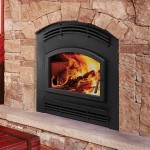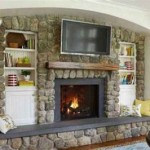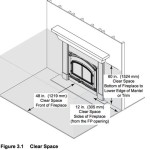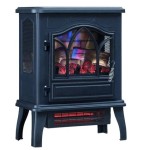Ventless Natural Gas Fireplaces With Blowers: A Comprehensive Guide
Ventless natural gas fireplaces are steadily gaining popularity due to their appealing aesthetics and ease of installation. These fireplaces, unlike traditional vented models, do not require a chimney or venting system, making them a convenient choice for various homes. While ventless fireplaces offer many benefits, it is important to consider their unique features and potential drawbacks before making a purchase. This article aims to provide a comprehensive guide to ventless natural gas fireplaces, particularly those equipped with blowers, exploring their advantages, disadvantages, and essential considerations.
Key Advantages of Ventless Natural Gas Fireplaces with Blowers
Ventless gas fireplaces with blowers offer a combination of heating efficiency, aesthetic appeal, and convenience. Here are some key advantages these fireplaces provide:
1. Improved Heating Efficiency and Distribution
Blowers play a crucial role in enhancing the heating efficiency of ventless gas fireplaces. By circulating heated air throughout the room, blowers ensure even heat distribution, creating a more comfortable and uniform temperature. This efficient heating can significantly reduce reliance on central heating systems, leading to energy savings and lower heating costs.
2. Enhanced Aesthetics and Ambiance
Ventless gas fireplaces are renowned for their sleek designs and elegant features. Their compact size allows for seamless integration into various home settings, adding a touch of sophistication and warmth to any room. The flames create a mesmerizing visual spectacle, fostering a cozy and inviting ambiance.
3. Convenience and Ease of Installation
Ventless fireplaces are relatively easy to install compared to traditional vented models. They do not require complex venting systems, reducing installation time and cost. This convenience makes them an attractive option for homeowners who prefer a hassle-free installation process.
Potential Drawbacks of Ventless Gas Fireplaces
While ventless gas fireplaces offer numerous advantages, they also come with certain limitations and potential drawbacks that homeowners should consider before making a purchase:
1. Combustion Byproducts and Air Quality
Ventless gas fireplaces release combustion byproducts into the air, including carbon dioxide, carbon monoxide, and water vapor. While these byproducts are typically released in minimal quantities, it is crucial to ensure adequate ventilation in the room and proper maintenance of the fireplace to minimize potential air quality concerns.
2. Limited Heating Capacity
Ventless fireplaces are generally designed for supplemental heating rather than primary heat sources. Their heating capacity is limited, and they may not be sufficient to heat an entire house, especially in colder climates. Therefore, it is essential to consider the size of the room and the climate before purchasing a ventless fireplace.
3. Safety Considerations
Ventless fireplaces require careful installation and maintenance to ensure safe operation. It is crucial to follow manufacturer instructions regarding proper ventilation and clearance from flammable materials. Regular inspections and cleaning are essential to prevent potential safety hazards.
Important Considerations for Ventless Gas Fireplaces with Blowers
Choosing the right ventless gas fireplace with a blower involves several factors that homeowners should carefully consider. These factors include:
1. BTU Output and Heating Capacity
The BTU output of the fireplace determines its heating capacity. Choose a fireplace with sufficient BTU output to effectively heat the desired space. Consult with a professional to determine the appropriate BTU output for your room size and climate.
2. Blower Features and Efficiency
Blowers play a vital role in heat distribution. Consider features like blower speed control, quiet operation, and efficient air circulation. Choose a blower that meets your specific needs and preferences.
3. Design and Aesthetics
Ventless fireplaces come in various designs and styles. Choose a fireplace that complements your decor and matches your personal aesthetic preferences. Consider the fireplace's size, shape, and materials to ensure it seamlessly integrates into your home.
4. Safety Features and Regulations
Ensure the fireplace meets all local safety regulations and codes. Consider features like flame sensors, overheat protection, and automatic shut-off mechanisms for enhanced safety.
5. Maintenance and Cleaning
Regular maintenance and cleaning are essential for optimal performance and safety. Choose a fireplace with easy-to-clean components and ensure you are familiar with the manufacturer's maintenance guidelines.
In conclusion, ventless natural gas fireplaces with blowers offer an attractive option for homeowners seeking supplemental heating and aesthetic appeal. However, understanding the potential drawbacks and considering essential factors during the selection process ensures a safe, efficient, and enjoyable experience.
:max_bytes(150000):strip_icc()/ventless-gas-fireplaces-4160746-hero-f9d4bdcd9bd446eb84406de306f790ba.jpg?strip=all)
How To Pick Out A Ventless Gas Fireplace

Empire 36 Inch Vail Vent Free Gas Fireplace With Blower Intermittent Pilot

Empire 24 Inch Vail Vent Free Natural Gas Fireplace

Bluegrass Living 55 In Black Ventless Natural Fireplace The Gas Fireplaces Department At Com

Duluth Forge Dual Fuel Ventless Gas Fireplace 26 000 Btu Remote Control Antique White Finish 170105 The Home Depot

Ventless Gas Fireplace Propane

Considering A Ventless Gas Fireplace Here S What You Need To Know Bob Vila

Duluth Forge Dual Fuel Ventless Gas Fireplace 32 000 Btu Remote Control Antique White Finish Com

Radiance Vent Free Gas Stove The Place

Duluth Forge Dual Fuel Ventless Gas Fireplace 32 000 Btu Remote Control Antique White Finish 170107 The Home Depot
Related Posts








